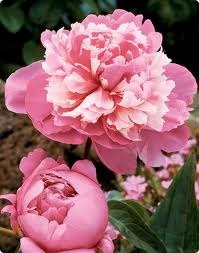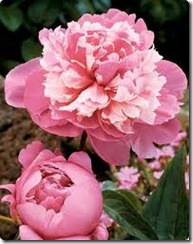The word peony is thought to come from the ancient Greek physician to the gods, Peaon, as he is believed to be the discoverer of the peony’s medicinal powers. An additional definition of the word "paean" is "hymn of praise," and was used in reference to the Greek god Apollo. Originally cultivated in the temperate regions of Asia, China, Europe and the northwest parts of North America, the peony is a commonly seen plant throughout the gardens of this country.
Planting Tips
-
Winter-hardy perennials, peonies come in two basic classes. The garden peony grows up to 36 inches in height and dies back each fall, returning to bloom in the spring. The tree peony grows more like a shrub and produces numerous flowers; it does not die back completely in the autumn. Soil quality and planting depth are the two most important factors when planting them. The soil should be well-drained and fertilized with organic matter or superphosphates prior to planting; due to the plant’s longevity the soil should be prepared prior to planting, as amending it is impossible after the fact. Plant garden peonies at depths of 2 to 4 inches depending on your zone, deeper in colder zones than warmer ones. Tree peonies should be planted deeper at 4 to 5 inches. Planting peonies too deep causes them not to flower.
Fertilization Tips
-
When properly fertilized prior to planting, the peony is largely maintenance free. The plants flourish with little assistance from man. However, a little routine care can increase your peony’s vigor. Fertilize in spring with a low-nitrogen fertilizer as peonies do not tolerate nitrogen well. One half cup per plant is sufficient. Also mulch them in spring with up to 3 inches of compost or other organic matter. This controls weeds, keeps the soil cool and retains moisture. The mulch should be completely removed in the fall to keep the incidence of disease to a minimum. Cut plants back almost to ground level after the first killing frost in late fall.
Tips for Better Blooms
-
Increase the size of your peony’s flowers by removing all but the main — or terminal — bud on each stem. This process is known as disbudding, and encourages a large central flower as opposed to numerous smaller flowers. Deadhead flowers before they begin to develop seeds. Seed development begins after the flower heads begin to fade. Do not remove leaves, even when cutting flowers. Each stem needs a minimum of 3 leaves to produce more blooms; the more leaves, the better. If using your peonies for cut flowers, take no more than one-third to one-half of the flowers from any given plant.
Transplantation
-
Peonies do not like to be divided and moved, and their roots are brittle and prone to breaking. Once transplanted, it may take several years for them to recover enough to bloom again. Use sharp tools when digging them up, and take as much as possible of the plant’s original soil with it to its new location. When dividing, use a large, very sharp, sterilized knife and cleanly cut the clump into halves or thirds. A division should contain a minimum of 3 eyes, which are the growing points on the root. Transplantation becomes necessary if the sun-loving plant becomes crowded or shaded by trees or other large plants. It should always be done in the fall after the plant has gone dormant for the winter to minimize stress.


Deprecated: strpos(): Passing null to parameter #1 ($haystack) of type string is deprecated in /home/agriviek8Qv/agriviet.net/public_html/wp-includes/comment-template.php on line 2522